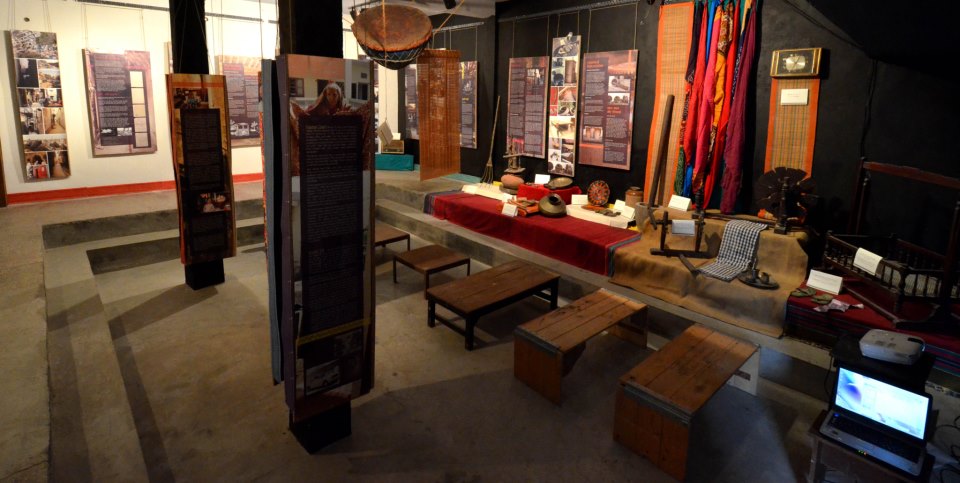/regions/bay-bengal
Bay of Bengal
Rights of adivasis over forest lands diminishes; their consent no longer mandatory for all development projects taken up on forest land - Roundup of the week’s news (February 11-17, 2013)
Posted on 18 Feb, 2013 11:18 PMAdivasis' rights over forest lands diminishes
Assessing the land use change and its impact on water resources: A study on the Mula and Mutha rivers catchment area in Pune
Posted on 17 Feb, 2013 09:11 PMLand use changes hydrologic system and have potentially large impacts on water resources. An assessment in an area with seasonally limited water availability and which is subject to rapid socio- economic development and population growth will provide an exemplary view on the local impacts of major recent developments in India. In this backdrop this paper analyzes past land use changes between 1989 and 2009 and their impacts on the water balance in the Mula and Mutha Rivers catchment upstream of Pune. The aim of the paper is:
- assess the land use changes between 1989/1990 and 2009/2010
- analyze the impacts of these changes on the long-term water balance components in the Mula and Mutha Rivers catchment upstream of the city of Pune.
An exhibition at Studio Safdar in Shadi Khampur traces the history of the urban village and its water systems
Posted on 10 Feb, 2013 07:12 PMGuest post: Amita Bhaduri
West Delhi’s dusty neighbourhood, Shadi Khampur now has its own museum, in the traditional brick-and-mortar sense. I live nearby, have worked out of an office here and am familiar with the alleyways. But I got to know only now, what life in the neighbourhood was like. Its rich history and its connect to larger narratives from the past, like the series of land acquisitions in Delhi, the Emergency, and the anti-Sikh riots of 1984 which had gone largely undocumented and unarchived have been chronicled in the Neighbourhood Museum of Local History of Shadi Khampur, at Studio Safdar, a cafe cum bookstore.

Neighbourhood Museum at Studio Safdar
Source: Facebook page on “Public Art Project at Studio Safdar”
Assessing the environmental flows for Kumbh Mela- 2013 at Triveni Sangam, Allahabad, Uttar Pradesh- A document by World Wildlife Fund India
Posted on 04 Feb, 2013 03:49 PMThis document by the World Wildlife Fund India, is on the rapid assessment done on the Environmental Flows(E-Flows) for Kumbh Mela that is taking place in Allahabad, Uttar Pradesh.
Delhi’s draft water policy released - Roundup of the week’s news (January 21 -27, 2013)
Posted on 28 Jan, 2013 08:14 PMDelhi’s draft water policy
Compendium of sewage treatment technologies by Indian Institute of Technology, Kanpur
Posted on 24 Jan, 2013 04:14 PMThis compendium of sewage treatment technologies by the Indian Institute of Technology (IIT), Kanpur has been prepared, based on primary and secondary data gathered from operation of sewage treatment plants (STPs) in the country over the last two decades.
Udupi in Karnataka, sets standard for water management - Roundup of the week’s news (January 14 -20, 2013)
Posted on 21 Jan, 2013 03:20 PMUdupi in Karnataka, sets standard for water management
Neoliberalism and the nature of the Polavaram beast - How the project will affect the Koya settlements in the Eastern Ghats
Posted on 21 Jan, 2013 11:51 AMFascism of the beginning of the twenty first century is the articulation and translation of racism and ethnicity into politics. Political developments in the nineteen nineties and the first years of the twenty first century demonstrate the determination to control the peripheries and the 'third world'.
Moving from paddy and sugarcane to less water-intensive crops such as oilseeds, pulses and millets can help resolve the Cauvery water dispute
Posted on 14 Jan, 2013 12:10 AMWhat happens when two or more states are dependent on same water resource for agricultural purposes ? Do the states compete for the resource or are their needs sufficiently different from each other? What are the consequences of the competition for this precious resource?
This article sheds light on the dispute between Karnataka and Tamil Nadu, for sharing Cauvery river water. The ongoing tussle between the two states has seen a lot of unrest amongst farmers in form of dharnas, protests, rail roko and non-cooperation by citizens, and disagreement with the agreements made by their respective governments and unending negotiations by governments involved, to come to a mutually agreeable decision.
